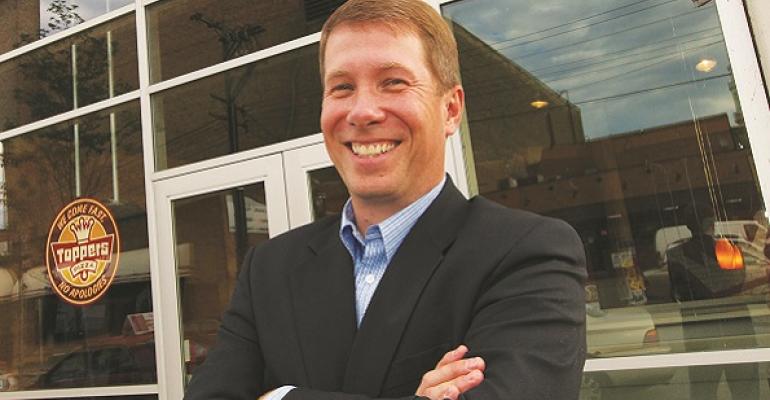Despite factors such as high unemployment, a still-recovering economy and continued policy uncertainty in Washington, the franchise restaurant business, especially in the quick-service segment, is still a growth place to be.
According to the International Franchise Association Educational Foundation’s new report, “The Franchise Business Economic Outlook: 2013,” the quick-service restaurant/foodservice franchise industry will increase employment at a faster rate than the franchise industry overall. Released in December 2012, the report forecasts franchise quick-service restaurants, which include fast-casual establishments, will increase employment by 2.2 percent, while franchises overall will increase employment by just 2 percent in 2013. In addition, quick-service restaurants are expected to grow units by nearly 2 percent and sales by 5.2 percent this year. Franchise businesses overall will grow at a slightly slower rate than last year but are anticipated to outpace other business sectors in 2013.
“Franchise businesses emerged from the recession stronger due to the strength of the franchise business model and the strong support of franchisors working with franchisees to sustain and maximize profitability,” said Steve Caldeira, president and chief executive of the International Franchise Association.
Franchise fast-food and fast-casual concepts across the country have already been experiencing this type of growth and anticipate much the same forecast for their brands for the remainder of the year.
Whitewater, Wis.-based Topper’s opened 16 units in 2012 — a record year for the 21-year-old brand — and anticipates opening more by the end of 2013.
“We’re coming off a record growth year,” said Scott Gittrich, president of Topper’s Pizza. “Our pipeline has more franchise candidates than ever.”
Part of what is driving the interest in and growth of the brand is the success of existing franchisees, said Gittrich. Existing franchisees’ success not only inspires them to grow units, but it’s hugely attractive to prospective franchisees choosing a restaurant brand to invest in.
“Franchise concepts that are working have successful franchisees that will grow,” added Gittrich.
In addition to growing units, Gittrich said Topper’s sales were up 30 percent to $34.6 million in 2012 and are projected to reach $48.3 million by year’s end.
There’s no shortage of growth at McAlister’s Deli, a Southern-style fast-casual concept, which grew same-store sales by more than 8 percent and added 12 units in 2012. Of those dozen new units, the majority were opened by existing McAlister’s franchisees.
“The toughest [part] is always going from one store to two,” said Frank Paci, president of McAlister’s. “There are lots of multiunit restaurant operators out there. Opening one more [restaurant] leverages their overhead.”
While there are plenty of from-the-ground-up success stories at McAlister’s — including one franchisee who started out as a sandwich maker and now has 34 units — these days the bulk of new prospects are multiunit operators or businesspeople with previous experience in the hospitality industry.
“The great thing about franchising is there’s a high degree of success in that model,” said Paci. “That’s why people buy in.”
In the few years prior to 2011, unit growth was “dismal” — and even included some closures — for fast-casual and retail chain HoneyBaked Ham. Expansion began picking up in 2011 and hit a record in 2012 with 13 openings.
“We’re pleased with our growth in 2012,” said Molly Kesmodel, vice president of franchise operations and development for HoneyBaked Ham. “We’re starting to inch back to where we were prior to 2008.”
The appeal of HoneyBaked Ham to franchisees is the mix of fast casual and retail, Kesmodel said. Because of this mix, the chain has much higher check averages than a regular retail or a regular fast-casual chain, alone. The average HoneyBaked Ham check during the holiday season is around $60, and it’s in the mid-$30s off-season. This is due to sales of large-ticket items, such as whole hams and turkeys, an area of business that the chain has seen increase by 10 percent.
“We are unique in that we are a retail company as well as an eat-in [business],” said Kesmodel.
“[Fast-casual franchisees] have to sell a lot of sandwiches or meals to be successful. [Our prospects] see it as we’re more than just a fast-casual [concept].”
Milford, Ohio-based Penn Station East Coast Subs is also using a slightly different model to attract franchisees. The more than 250-unit fast-casual sandwich chain added 21 units in 2012 and expects to add 30 to 35 more by the end of 2013. And in the next three to five years the chain expects 115 new restaurants to be built by current franchisees.
“We are selling return on investment,” said Craig Dunaway, Penn Station’s president. “If you make money on a restaurant, you want to open another.”
Penn Station’s secret to keeping franchisees succeeding and expanding, and attracting new franchisees even in tough times, Dunaway said, is not just having a great product, but also devoting the corporate team to helping franchisees make money.
“We try to maximize profitability,” he said.
While some franchisors charge fees on everything from real estate to POS systems, Penn Station doesn’t charge any. It instead opts to make its corporate profits only from franchise royalties.
“Penn Station is an attractive option for new franchisees because of its unique business model. We just don’t look to nickel and dime franchisees,” said Dunaway. “People come to us because of the quality of our products. They respect and appreciate our growth model.”
With continued growth forecasted, it doesn’t look like anything can get in the way of franchise quick-service restaurants’ continued success. Dunaway, at least, doesn’t see it that way.
“I don’t worry about anything we’re doing that could impede our growth,” said Dunaway. “I [only] worry about external things that could slow our growth.”





